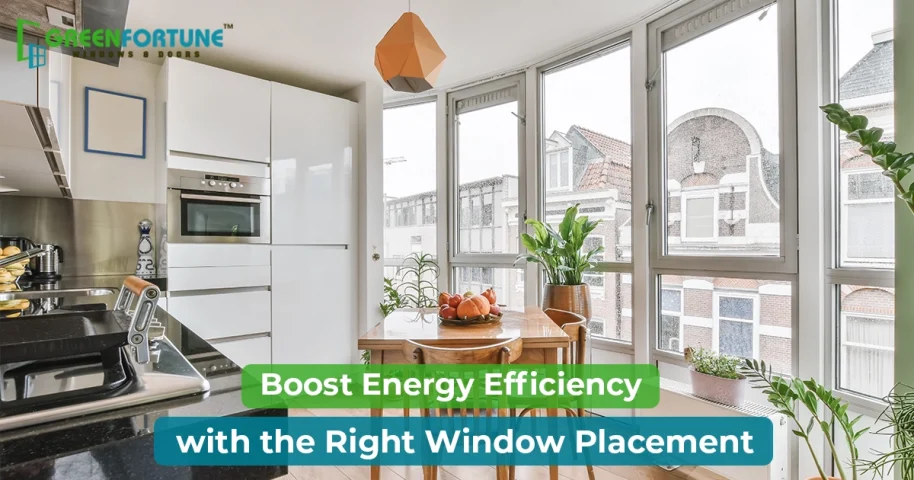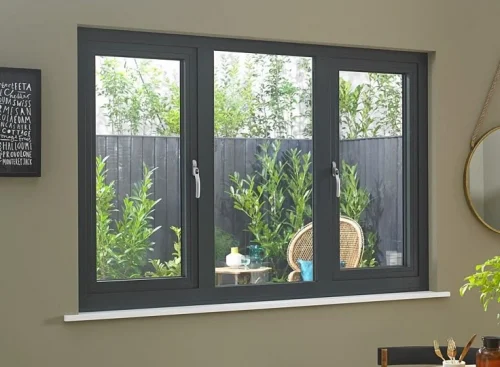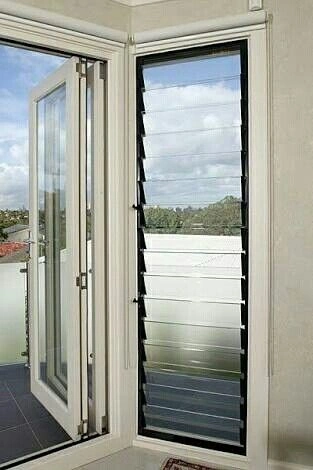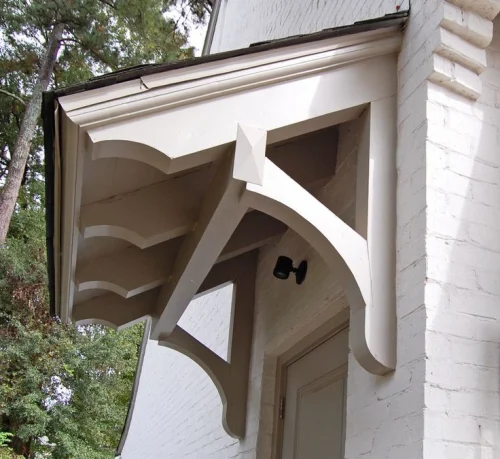
Top 7 Kerala Nalukettu Home Design Ideas That Are Trending In 2025
June 18, 2025
Infusing Modern Traditional Interior Design Ideas in Indian Homes
June 19, 2025Ever feel like your home is either too hot in summer or too cold in winter, no matter how much you blast the AC or heater? Well, the problem might not be your appliances. It could be your windows or more specifically, window placement for energy efficiency.
Believe it or not, where and how you place your windows can make a big difference in how comfortable your home feels and how much energy you use.
In this blog, we’ll look at why window placement matters, how it ties into natural ventilation, passive solar design, and window orientation, and how you can make smarter choices when building or renovating
Why Window Placement Matters
Windows do more than just let you enjoy the view. They bring in natural light, allow fresh air to circulate, and help regulate indoor temperature. But if they’re placed poorly, they can cause your home to overheat in summer or lose warmth in winter, leading to high energy bills and an uncomfortable space.
Proper window placement for energy efficiency helps reduce your reliance on artificial heating, cooling, and lighting. That means lower utility bills, less strain on your HVAC system, and a smaller carbon footprint.
1. The Role of Window Orientation
Window orientation is all about which direction your windows face. This has a huge impact on how much sunlight and heat enter your home during different times of the day and year.
Here’s a quick breakdown:
Orientation | Sunlight & Heat | Best Use |
South-facing (in the Northern Hemisphere) | Gets the most sun, especially in winter | Ideal for heating & lighting |
North-facing | Soft, even light, minimal heat | Great for consistent daylight |
East-facing | Morning sun, cooler in the afternoon | Good for bedrooms or kitchens |
West-facing | Harsh afternoon sun | Can cause overheating |
By planning your window placement for energy efficiency with orientation in mind, you can use the sun to your advantage. South-facing windows can help warm your home in winter, while avoiding too many west-facing windows can prevent overheating in summer.
2. Passive Solar Design: Free Heat from the Sun
Passive solar design is a smart way to use sunlight to heat your home naturally. It’s all about placing windows in the right spots to capture and store heat during the day, then release it slowly at night.
In colder climates, larger south-facing windows help bring in more sunlight, especially in winter when the sun is lower in the sky. In warmer climates, smaller or shaded south windows still provide light without too much heat.
Here’s how to make it work:
- Use thermal mass (like stone or tile floors) to absorb and hold heat.
- Keep overhangs or awnings above windows to block high summer sun but allow low winter sun.
- Use double or triple-glazed windows to keep heat in during winter and out during summer.
So, when thinking about window placement for energy efficiency, remember that passive solar design isn’t just for eco-homes — it works for any house.
3. Natural Ventilation: Let the Breeze In
Airflow is just as important as sunlight. Good window placement for energy efficiency also means placing windows to let breezes pass through your home. This is known as natural ventilation, and it’s one of the easiest ways to cool your home without using electricity.
To get it right:
- Place windows on opposite sides of a room to create cross-ventilation.
- Use higher windows to release warm air, and lower ones to let cool air in.
- Louver or casement windows work great for directing airflow.
If your home is in a breezy area, you can use that to your advantage by aligning windows with the prevailing wind direction. That way, you can reduce your need for fans or air conditioning, especially at night.
4. Size and Placement: It’s Not Just About Direction
Of course, window placement for energy efficiency isn’t just about direction — size and height matter too.
Larger windows let in more light and heat. If placed on the right side of the house, they can reduce your need for artificial lighting during the day. But if they face the wrong direction, they can lead to overheating or heat loss.
High windows help with ventilation and can also let in more natural light without sacrificing privacy. They’re great in areas like hallways, bathrooms, or above kitchen counters.
Clerestory windows (windows placed high on the wall) are especially useful in passive solar homes. They allow light deep into the home and help with ventilation when combined with ceiling fans or open-plan layouts.
5. Shading and Glazing: The Finishing Touch
Even with smart window placement for energy efficiency, the right window treatments can make or break your plan.
Shading options like:
- Roof overhangs
- Exterior shutters
- Pergolas or trellises
- Landscaping (like trees or vines)
… can all help control how much sun reaches your windows throughout the year.
Window glazing also plays a key role. Double-glazed windows reduce heat loss in winter and keep heat out in summer. Low-E (low emissivity) coatings reflect infrared light, improving energy performance without sacrificing light.
So, while placing your windows smartly is essential, backing them up with proper materials makes the whole system work better.
Common Mistakes to Avoid
Below are some common mistakes that homeowners make while designing window layouts:
- Too many west-facing windows: This tends to cause overheating in the late afternoon.
- Tiny or no windows on the north side: You lose out on balanced daylight.
- Not matching window size with climate: Large windows waste energy in extreme weather and can be expensive to install and maintain.
- Poorly positioned windows for airflow: Cross-ventilation is absent, and air becomes trapped, which makes the rooms stagnant.
Avoiding these errors makes your window placement for energy efficiency really pay off.
Tips for Renovating Existing Homes
If you're not starting from scratch, don't panic — you can still upgrade your home's window performance.
Try these:
- Install or add south-facing windows for additional light and heat.
- Apply reflective films or shades to west-facing windows.
- Replace drafty old single-pane windows with efficient ones.
- Combine fans and high windows for enhanced ventilation.
Small changes can produce big energy savings when done properly.
Final Thoughts
Window placement for energy efficiency is one of the brightest ideas in which you can invest when constructing or remodeling a house. It influences all — the amount of light you receive, how efficiently your house will remain warm or cool, and how much you'll pay on your power bill.
By considering window direction, passive solar building, and natural ventilation, you can design a home that's not only lovely but comfortable and energy-efficient as well. Whether you're constructing new or renovating what you have, a bit of planning makes a big difference. Let your windows cooperate with nature, not fight it — and your house (and bank account) will appreciate it.
Need windows that won’t peel or crack in the sun?
Not all windows are the same. Ours are crafted with precision, care, and quality materials. At Green Fortune, we believe in giving you value for your money. So when you buy uPVC doors or windows from us, you get nothing but the best.
FAQs
- Can skylights enhance window placement for energy efficiency?
Yes, skylights do increase natural lighting and limit daytime electrical usage. When properly placed and at the right angle, they also aid in passive winter heating. However, they should be well-insulated to prevent heat loss or gain.
- How does window placement for energy efficiency differ between hot and cold climates?
In hot climates, window placement should limit direct sun exposure, especially on the west. In colder climates, south-facing windows are ideal to capture heat. Each climate calls for a tailored approach to get the best energy results.
- Does the number of windows affect energy efficiency?
Yes, having too many or too few windows can impact insulation and temperature control. The key is balanced placement with the right size and orientation. Quality matters more than quantity when planning for efficiency.







